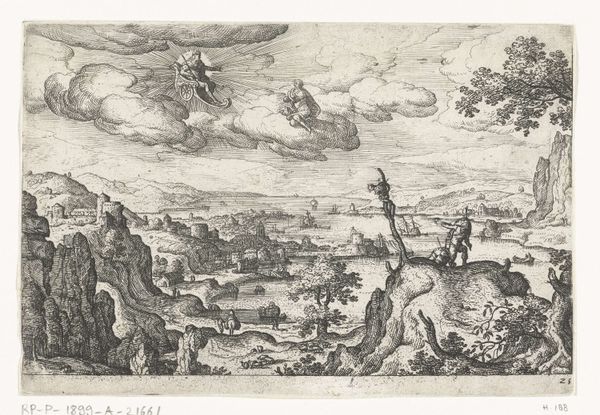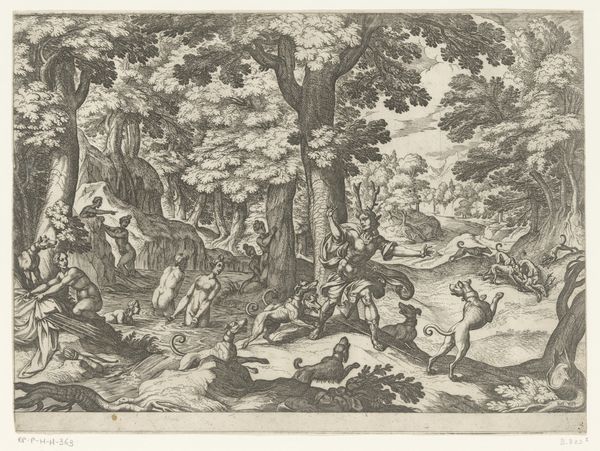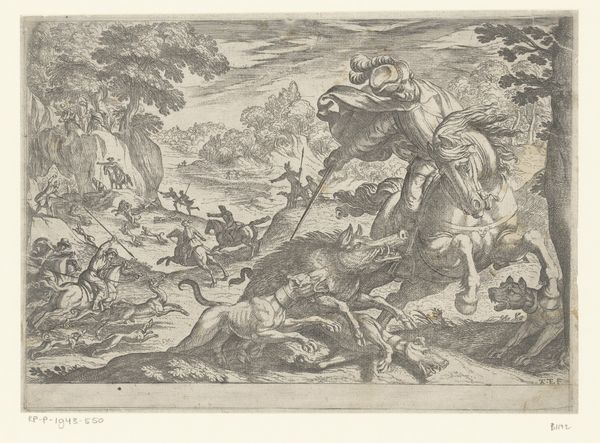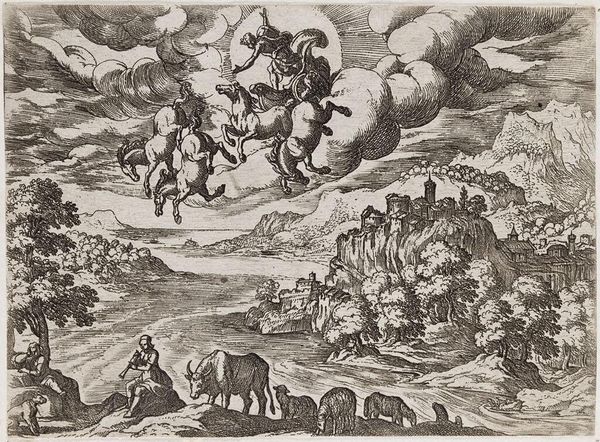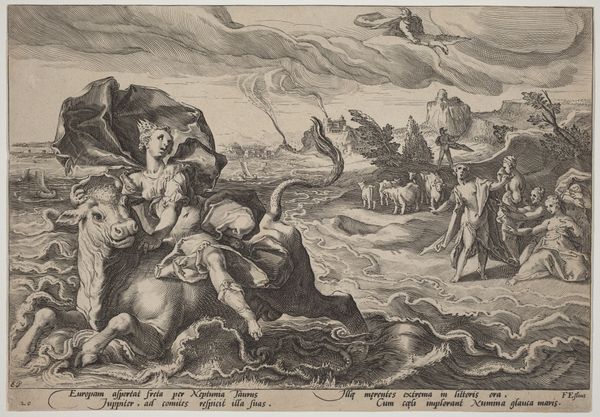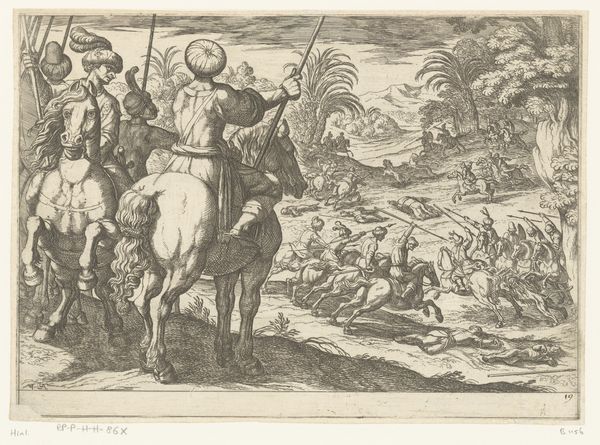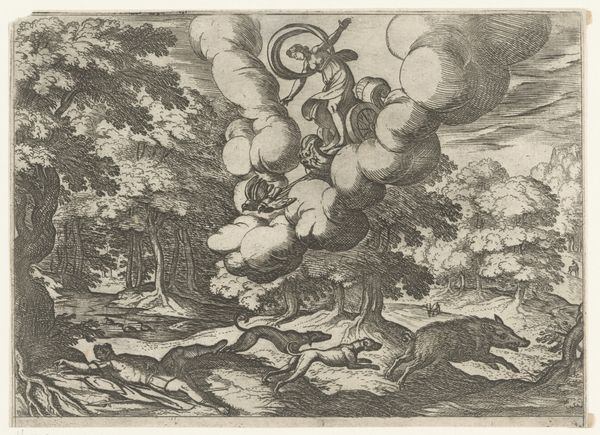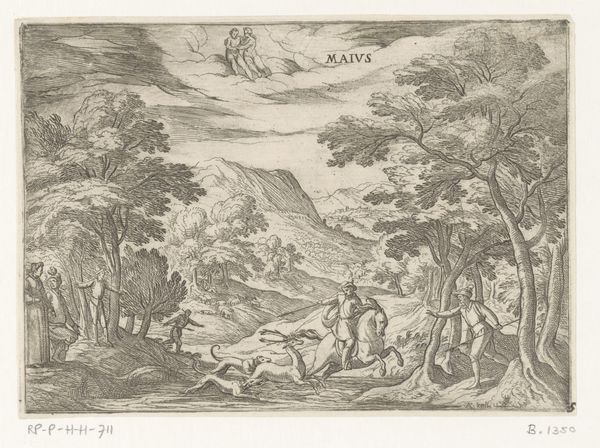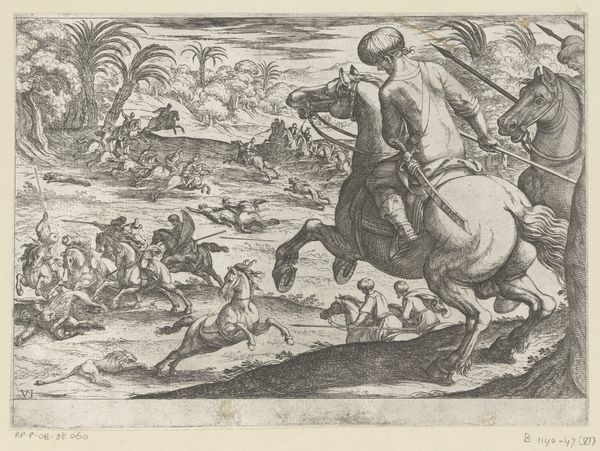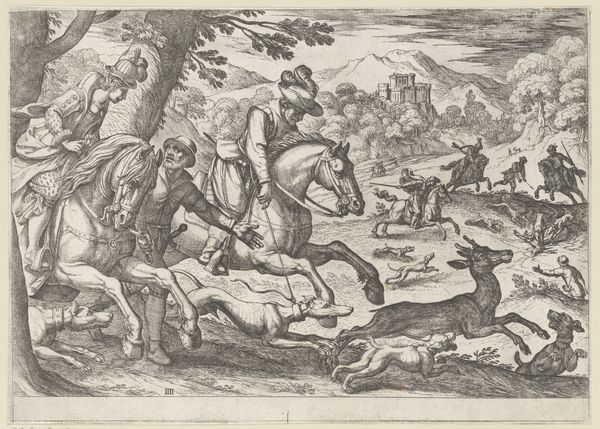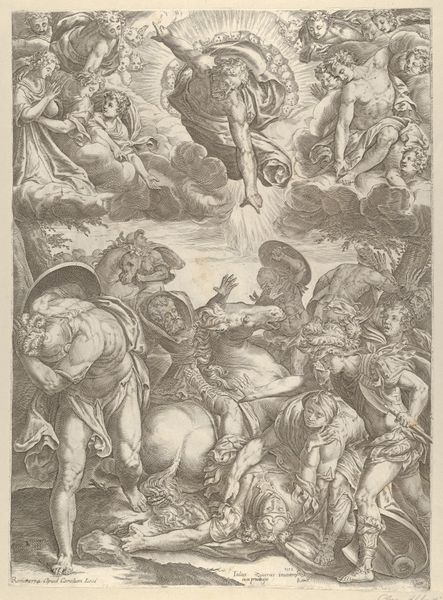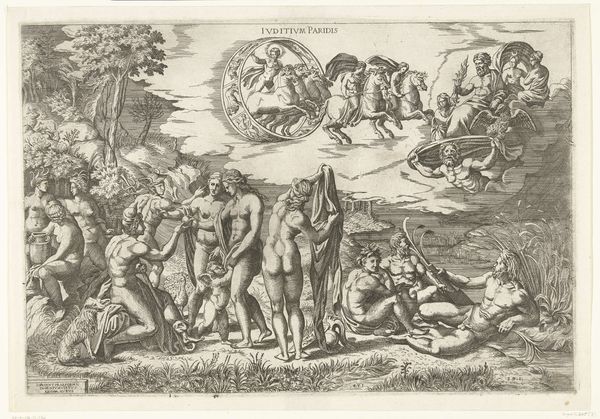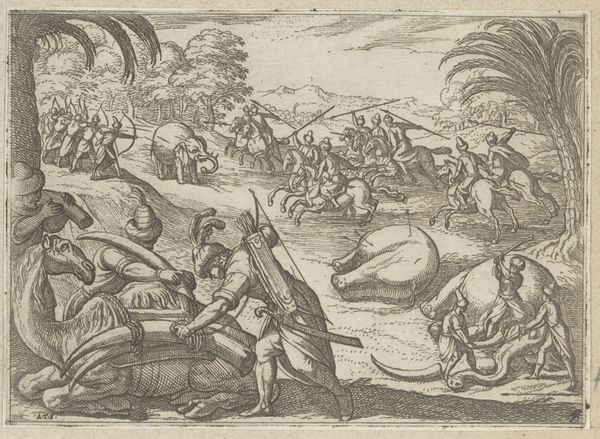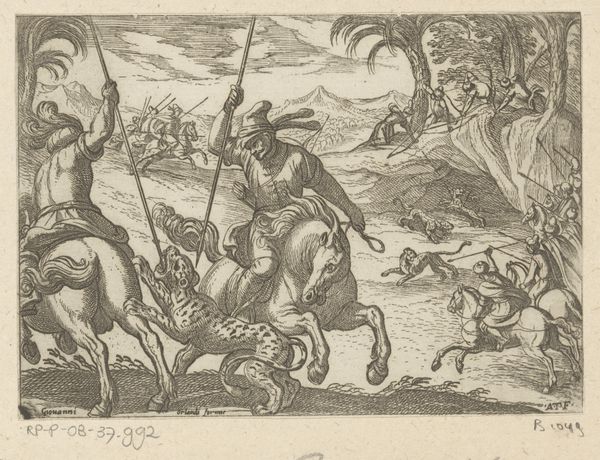
print, engraving
#
baroque
# print
#
old engraving style
#
landscape
#
history-painting
#
engraving
Dimensions: height 145 mm, width 192 mm
Copyright: Rijks Museum: Open Domain
Curator: Look at this tumultuous scene, full of drama. This is "Landscape with the Fall of Phaeton," an engraving created sometime between 1565 and 1630, attributed to Antonio Tempesta. It's part of the Rijksmuseum's collection. Editor: It hits you immediately, doesn't it? A blend of terror and awe. Like witnessing a cosmic accident about to reshape the landscape, while down below life just... carries on. Curator: Indeed. The engraving depicts the mythological story of Phaeton, son of Helios, who disastrously attempts to drive the sun chariot across the sky. Notice how Tempesta juxtaposes the chaotic drama in the heavens with the serene pastoral scene below. Editor: The perspective is fascinating. Those tiny figures tending their flocks, completely oblivious to the celestial drama unfolding above them! There's a certain irony to it, like a visual metaphor for humanity's limited perspective. We’re often too caught up in our daily lives to notice the larger forces at play. Curator: Exactly. Tempesta uses this contrast to highlight the consequences of hubris and the power of the gods. The precise lines of the engraving emphasize the tension, almost as if the scene is frozen in a moment of impending destruction. And think about the medium, engraving; painstaking detail meticulously rendered, all to portray utter chaos. Editor: And it's Baroque, isn't it? That sense of heightened emotion and theatricality... I find it slightly amusing that he dedicates so much effort to detailing Phaeton and his horses when it’s the tranquil countryside beneath that catches my eye. I find comfort in their quiet perseverance. Maybe Tempesta, despite the overt message, was pointing to the resilience of ordinary existence? Curator: Perhaps! That tension is part of what makes it so engaging, I think. It's both a cautionary tale about ambition and a celebration of the enduring beauty of the natural world, which continues regardless. And don't forget the political interpretations, so many readings possible. Editor: It definitely gives you food for thought... it asks what truly resonates over time, doesn't it? Curator: Absolutely. It makes you contemplate not just the grand narratives of myth, but the quiet dignity of everyday life in their shadows.
Comments
No comments
Be the first to comment and join the conversation on the ultimate creative platform.
